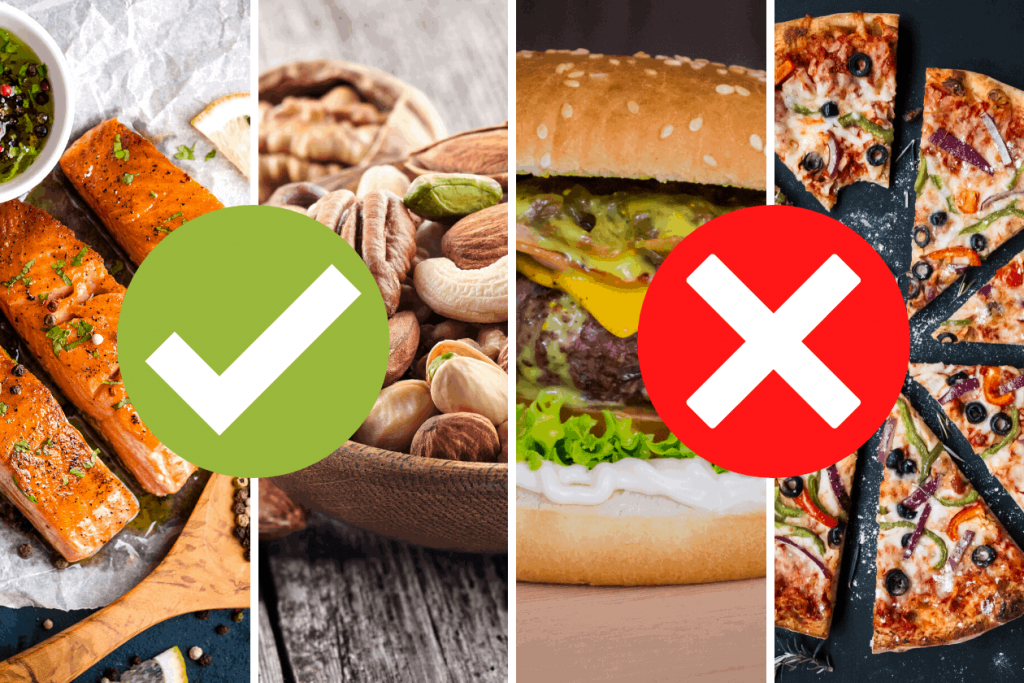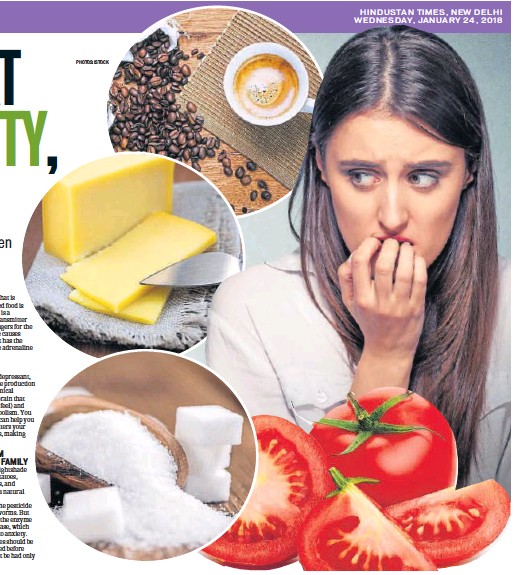
Foodborne illness outbreaks are almost always preventable. However, there are some things you can do to minimize your risk. One way to reduce the risk is to practice good hand hygiene, by washing your hands thoroughly before handling any food. This will prevent pathogens spreading to other foods and contaminating them. Wash your hands with soap water for 20 seconds. Check to ensure that the food you are eating is cooked properly if you are dining out. If you're unsure whether a certain dish is safe to eat, you can throw it away.
Not only should you practice hygiene, but you also need to be aware of what food you are eating. Food poisoning can occur when you eat raw meat, poultry or eggs. To avoid contracting food poisoning, you should avoid consuming these products. Before you use fruits or vegetables, be sure to wash them thoroughly. Depending on your state's regulations, you may be eligible to receive a free virtual doctor appointment within 15 minutes of having your meal.
In addition to washing your hands thoroughly, be aware of the temperature of the food you're eating. Harmful bacteria and toxic substances can be found in raw meat, poultry, and fish. For harmful pathogens to be eliminated, make sure your dishes are cooked thoroughly. If in doubt, request a replacement plate. You should wash your hands well before you prepare food in restaurants. You should refrigerate perishable products as soon as possible. You can consult your urgent care center or emergency room if you are unsure of the symptoms.

You should wash your hands frequently and avoid touching food. Food manufacturing can introduce bacteria and viruses to food. These bacteria can be found in the farms and kitchens that produce the food. Handling food can also spread the germs. Even the freshest food can be contaminated. You need to keep these points in mind and practice good hygiene. This will prevent you from getting food poisoning.
Food poisoning symptoms can range from mild to severe. You may experience the symptoms immediately after consuming contaminated food, or they may take a couple of hours to appear. Handling raw meat is a must. Avoid putting raw meat on countertops or in sinks. This will increase the risk of catching the bacteria and causing food poisoning. If you have eaten the food already, you are still at risk of getting it from someone else.
The most common way to avoid food poisoning is to wash your hands properly. Washing your hands frequently is not enough. You also need to avoid food containing raw meats or dairy products. You should also avoid touching food that has been cooked for a prolonged period of time. When you prepare meat, bacteria can survive longer on your hands. It's important to wash your hands thoroughly before you consume it.
Refrigerated and frozen food should never be served. Washing fruits and vegetables properly is a must. When you cook, wash your fruits and vegetables thoroughly. These foods could be contaminated with bacteria. For this reason, you should wash them before preparing them. Use a paper towel or cloth to clean them. A kitchen mat can be used to store your food.

Food poisoning is a real danger when eating out. Choose a reputable restaurant for a delicious steak. You should avoid cooking your own food if you prepare it at home. You cannot be sure that your food is safe. Additionally, make sure to inspect for signs of bacterial contamination as well as cook the food properly.
Food poisoning symptoms include vomiting, diarrhea, cramps, and abdominal cramps. These symptoms may occur several hours after eating but usually disappear on their own. You should pack food in an insulated bag or cooler if you have recently traveled. Traveling by car? Make sure it's air-conditioned. Bring water, especially if you don't have the money. It will keep your body hydrated and help prevent salmonella.
FAQ
Why is it so important to lead a healthy lifestyle
A healthy lifestyle will help us live longer and happier lives. A healthy diet, regular exercise, good sleep habits, and stress management will help prevent diseases like heart disease, diabetes, cancer, and stroke.
A healthy lifestyle will improve our mental well-being and help us deal better with everyday stressors. A healthy lifestyle can also help you feel and look younger.
What should my weight be for my age and height? BMI calculator & chart
A body mass index calculator (BMI) is the best way to find out how much weight you should lose. A healthy BMI range is between 18.5 and 24.9. Aim to lose 10 pounds per month if your goal is to lose weight. To calculate your BMI, simply enter your height and weight into the BMI calculator.
Check out this BMI chart to determine if you are overweight or obese.
What does it take to make an antibiotic work?
Antibiotics are medications that kill harmful bacteria. The treatment of bacterial infections is done with antibiotics. There are many types and brands of antibiotics. Some can be taken orally, others are injected and some are applied topically.
Antibiotics are often prescribed to people who have been exposed to certain germs. An oral antibiotic might be prescribed to someone who has been exposed to chicken pox. This will prevent the spread of shingles. A penicillin injection might be given to prevent pneumonia in someone who has had strep.
Doctors should prescribe antibiotics to children. Children are more likely to experience side effects than adults from antibiotics.
The most common side effect of antibiotics is diarrhea. Other possible side effects include stomach cramps, nausea, vomiting, allergic reactions, headaches, dizziness, and rashes. These side effects are usually gone once the treatment is complete.
What is the difference in a virus and bacteria?
A virus is a microscopic organism which cannot reproduce outside of its host cell. A bacterium can be described as a single-celled organism which reproduces by splitting in two. Viruses have a very small size (about 20 nanometers), while bacteria is larger (up to one micron).
Viruses can be spread by contact with bodily fluids containing infected substances, such as saliva, urine and semen. Bacteria are often spread via direct contact with contaminated surfaces or objects.
Viral infections can be transmitted through skin cuts, scrapes and bites. They can also be transmitted through the eyes, nose, mouth, ears, rectum, and anus.
Bacteria can get into our bodies through cuts, scrapes and burns, insect bites, or other skin breaks. They can also enter our bodies from food, water, soil, dust, and animals.
Viruses and bacteria both cause illness. But viruses do not have the ability to multiply within their hosts. So they only cause illnesses when they infect living cells.
Bacteria can cause illness by multiplying in the body. They can even invade other parts of the body. That's why we need antibiotics to kill them.
What's the difference between fat or sugar?
Fat is an energy source that comes from food. Sugar is a sweet substance found naturally in fruits and vegetables. Both fats, as well sugars, provide the same number calories. But fats are twice as calories as sugars.
Fats are stored in the body and contribute to obesity. They can cause cholesterol buildup, which can lead you to heart attacks and strokes.
Sugars are quickly absorbed into the body and provide instant fuel. This causes blood glucose levels in the body to rise. High blood glucose levels can lead to type II diabetes.
What are 10 healthy habits?
-
Get breakfast every morning.
-
Don't skip meals.
-
You should eat a balanced diet.
-
Drink lots of water.
-
Take care of your body.
-
Get enough sleep.
-
Stay away from junk foods.
-
Do some exercise every day.
-
Have fun
-
Make new friends.
Statistics
- In both adults and children, the intake of free sugars should be reduced to less than 10% of total energy intake. (who.int)
- This article received 11 testimonials and 86% of readers who voted found it helpful, earning it our reader-approved status. (wikihow.com)
- According to the 2020 Dietary Guidelines for Americans, a balanced diet high in fruits and vegetables, lean protein, low-fat dairy and whole grains is needed for optimal energy. (mayoclinichealthsystem.org)
- According to the Physical Activity Guidelines for Americans, we should strive for at least 150 minutes of moderate intensity activity each week (54Trusted Source Smoking, harmful use of drugs, and alcohol abuse can all seriously negatively affect your health. (healthline.com)
External Links
How To
What does the meaning of "vitamin?"
Vitamins are organic substances found naturally in food. Vitamins aid us in absorbing nutrients from the food we eat. Vitamins are not made by the body, so they must be obtained through food.
There are two types: water-soluble and fat-soluble vitamins. Water soluble vitamins dissolve easily in water. Examples include vitamin C,B1 (thiamine), B2 (riboflavin), B3 (niacin), B6 (pyridoxine), folic acid, biotin, pantothenic acid, and choline. The liver and fatty tissues are home to fat-soluble vitamins. These include vitamin D, E and K, as well as beta carotene.
Vitamins can be classified by their biological activity. There are eight main groups of vitamins.
-
A - Essential for healthy growth and health maintenance.
-
C - essential for nerve function and energy generation.
-
D - Vital for healthy bones and teeth
-
E is necessary for good vision, reproduction.
-
K - Required for healthy nerves and muscles.
-
P - Essential for strong bones and teeth.
-
Q - Aids digestion and iron absorption
-
R – Required for the formation of red blood vessels.
The recommended daily intake (RDA), of vitamins varies with age, gender and physical condition. The U.S. Food and Drug Administration (FDA) sets the RDA values.
For adults aged 19 and older, the RDA for vitamin B is 400 micrograms daily. Pregnant mothers need 600 micrograms per days because it is vital for the development and growth of their baby. Children ages 1-8 require 900 micrograms per day. Infants under one year of age require 700 micrograms per day, but this amount decreases to 500 micrograms per day between 9 months and 12 months of age.
Children aged 1-18 years need 800 micrograms daily, while children overweight require 1000 micrograms per days. Children who are severely obese or underweight will need 1200 micrograms each day.
Children 4-8 years old who have anemia must consume 2200 micrograms of Vitamin C daily.
Adults over 50 years of age need 2000 micrograms per day for general health. Because of their higher nutrient needs, women who are pregnant or nursing need 3000 mg per day.
Adults over 70 years of age need 1500 micrograms per day since they lose about 10% of their muscle mass each decade.
Women who are pregnant, nursing or breastfeeding need more than the RDA. Pregnant mothers need 4000 micrograms per daily during pregnancy and 2500 after giving birth. Breastfeeding mothers need 5000 micrograms per day when breast milk is being produced.